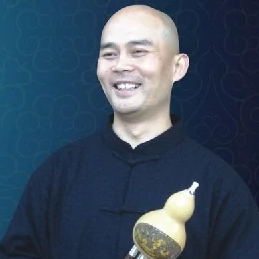Zhao Hongxiao

Zhao Hongxiao, born in 1969, graduated from the Music Department of Central China Normal University in 1993. He is currently a teacher at the School of Music of Central China Normal University, and concurrently serves as the vice chairman of the China Ocarina Art Committee and the director of the China Ocarina Art Research Institute. In 2000, the music education website "Hong Xiao Music Education Workstation" was created.
He is good at playing a variety of musical instruments, improving the production of musical instruments (has obtained more than 20 patents for the improvement of musical instruments such as Chinese Indian flute), as well as a variety of genres of music creation, and won the "4th International Ocarina Competition" in Korea in 2014 Solo Silver Award, four consecutive gold medals in the National Hulusi Bau Competition from 2005 to 2007, his original works "Love in the Wind and Leaves" and "Wild Wolf" have won the tenth grade of the Chinese National Orchestra Society and the Shanghai Conservatory of Music in the Hulusi Social Art Examination One of the grade-tested works in the grade repertoire.
In 2005, Bau's solo "Brother My Shoes Are Wet" was included in multiple editions of Hulusi teaching materials. In the field of music education, Zhao Hongxiao pioneered the free teaching method of music. He has been presenting as a keynote speaker in music education in various colleges and universities and local education system music teacher special training venues to give special reports.
Mr. Zhao Hongxiao has visited Italy, Japan, South Korea, Australia, Indonesia and other countries to participate in performances, competitions or academic exchange activities.
Teacher Zhao Hongxiao has always been enthusiastic about social welfare activities. Since 2004, he has organized and led the "Hong Xiao Music Education Support Group" during the summer break for 14 consecutive years. Mayang, Yunnan Suijiang in 2006, Guizhou Guanling in 2007, Hubei Changyang Yuxiakou in 2009, Henan Songxian in 2010, Guizhou Liping in 2011, Sichuan Gulin in 2012, Hubei Enshi in 2013, Inner Mongolia Bayan in 2014 Naoer, Gansu Chengxian in 2015, Yunnan Pucha Village in 2016, and Xinjiang Karamay in 2017, donated one or more small musical instruments to local children and sowed the seeds of music learning.
Mr. Zhao Hongxiao was invited successively on Hunan Satellite TV (the story of supporting teaching in Mayang), CCTV (participating in the 2013 CCTV Spring Festival Gala), Shanghai Satellite TV (different life), Liaoning Satellite TV (China Good Man), Shandong Satellite TV (I am Mr.), Hubei Satellite TV (I am Mr. Satellite TV (Music Magician) and other recorded programs or feature films.
Similar artist
Involving musical instruments
Involved portfolio
Involved news
Popular artists
- 01 Zhang Xiuyan
- 02 Chen Tao
- 03 Li Muliang
- 04 Zhu Changyao
- 05 Zhang Gaoxiang
 渝公网安备 50010702504639号
渝公网安备 50010702504639号